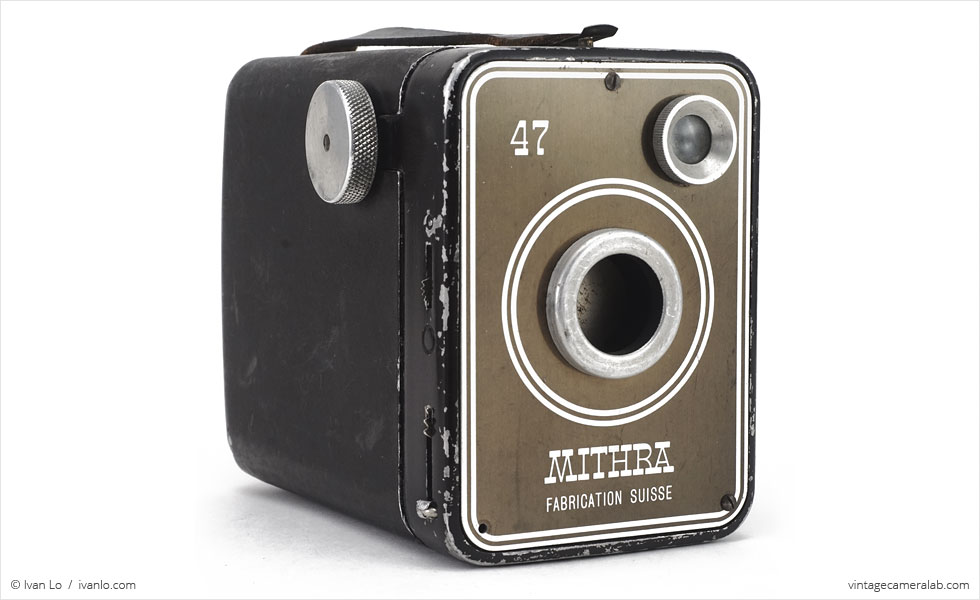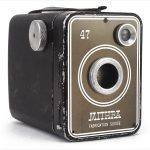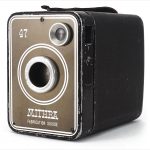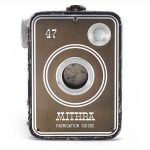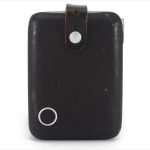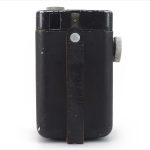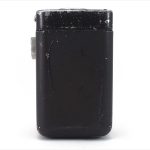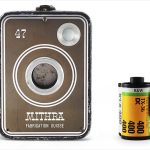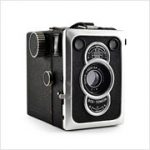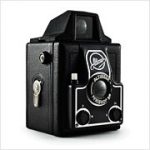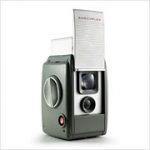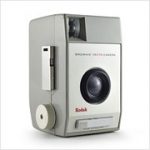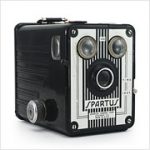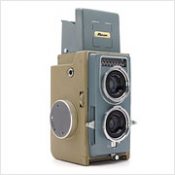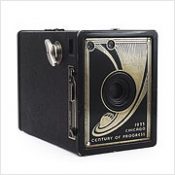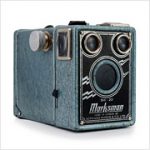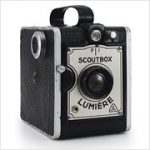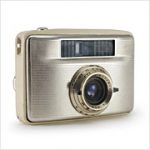Mithra 47 Specifications
| Manufacturer: | Mithra |
| Origin: | Switzerland |
| Made in: | Switzerland |
| Introduced: | 1947 |
| Type: | Box, Viewfinder |
| Format: | 120 Film |
| Dimensions: | 7.5 x 10.2 x 13 cm |
Mithra 47 Overview
The Mithra 47 is a box camera built in Switzerland and named after the year it was introduced: 1947. Not much other concrete information is known about this camera except that it came in different colors (black, brown, and reportedly red and green) and there was a very similar box camera with sharper corners called the Mithra 46 that came out the year before which was also rebadged and sold as the “Starmetal Goldy” by French camera brand Goldstein. Most of the sources I’ve come across regard Mithra as its own standalone brand but there are also rumors that suggest that it was manufactured by Agfa‘s subsidiary in Switzerland.
Operation of the Mithra 47 is pretty simple and straightforward. While other models like the Ansco Shur-Shot and the Zeiss Ikon Box-Tengor have two viewfinders, one for portrait and one for landscape photographs, the Mithra’s single viewfinder can be rotated within the body to suit either orientation. The shutter button is located on the bottom of the user’s right-hand side of the camera and has two settings: instant (roughly 1/30 of a second) and bulb (the shutter stays open for as long as the button is depressed) which can be activated by pulling out the metal tab below. On top of the shutter button is the aperture selector which allows you to choose between f/8 and f/11. After an exposure is made, the knurled film advance knob above and the red window on the rear of the camera can be used to ready the next frame.
Although not immediately obvious to the casual observer, one of the biggest differences between the Mithra 47 and other box cameras of the time is build quality. Unlike the vast majority of its contemporaries, the main body of the 47 is made of a single piece of metal which minimizes the possibility of light leaks by eliminating seams. The fitment beteeen the two halves of the camera is superb with the tiniest of gaps made even more light-tight by a felt lining. The 47 also has a nice weight to it, making it feel solid and sturdy.
I spent the better part of a decade hunting for a Mithra 47 before I finally found one on eBay. Its condition is good but not great, with noticeable paint loss, scratches, and a missing screw on the front face plate. Still, I believe it’s one of the rarer cameras in my collection and, along with the delightfully eccentric Hunter Gilbert, one of my favorite box cameras of all time.
Find your very own Mithra 47 on eBay.
McKeown, James M. and Joan C. McKeown’s Price Guide to Antique and Classic Cameras, 2001-2002. (Grantsburg, WI, USA: Centennial Photo Service, 2001), p 251, 478.
“Mithra 47,” Camera Wiki, http://camera-wiki.org/wiki/Mithra_47

